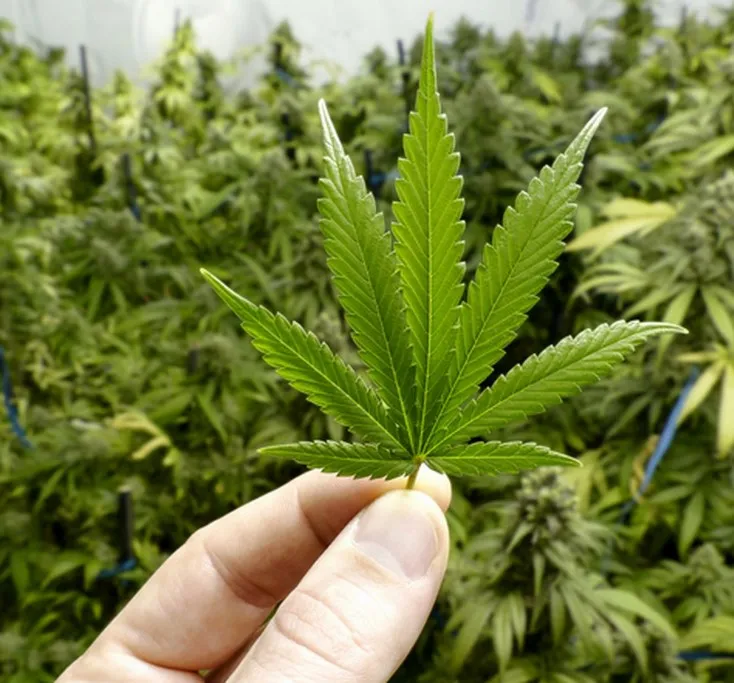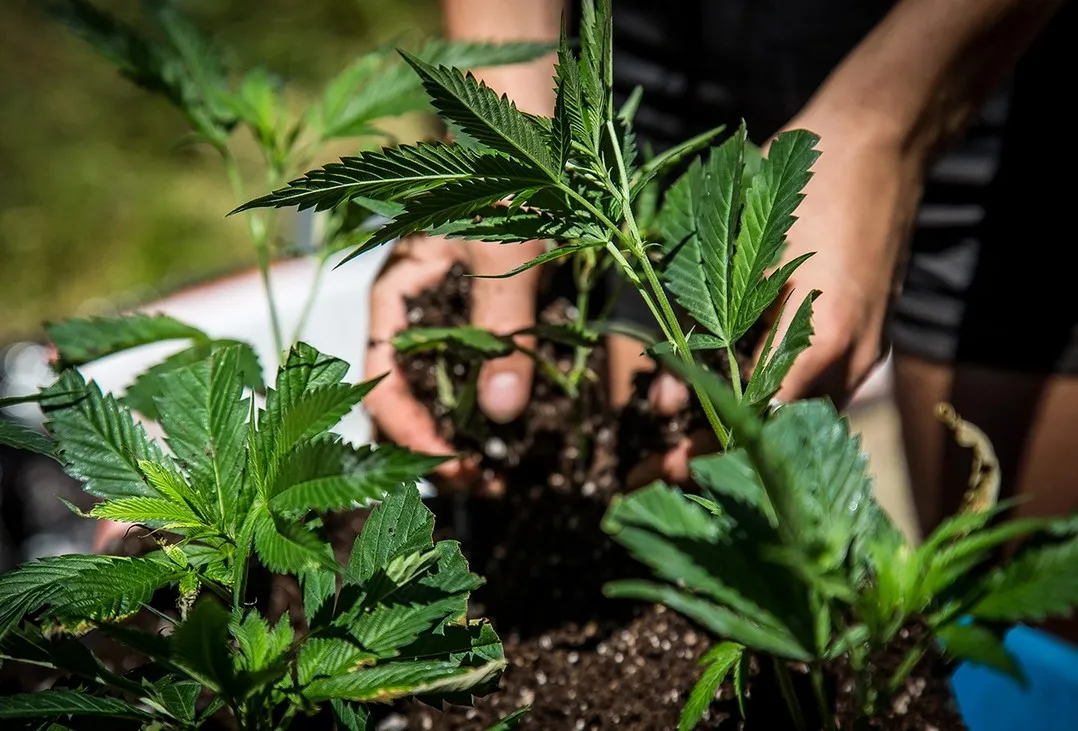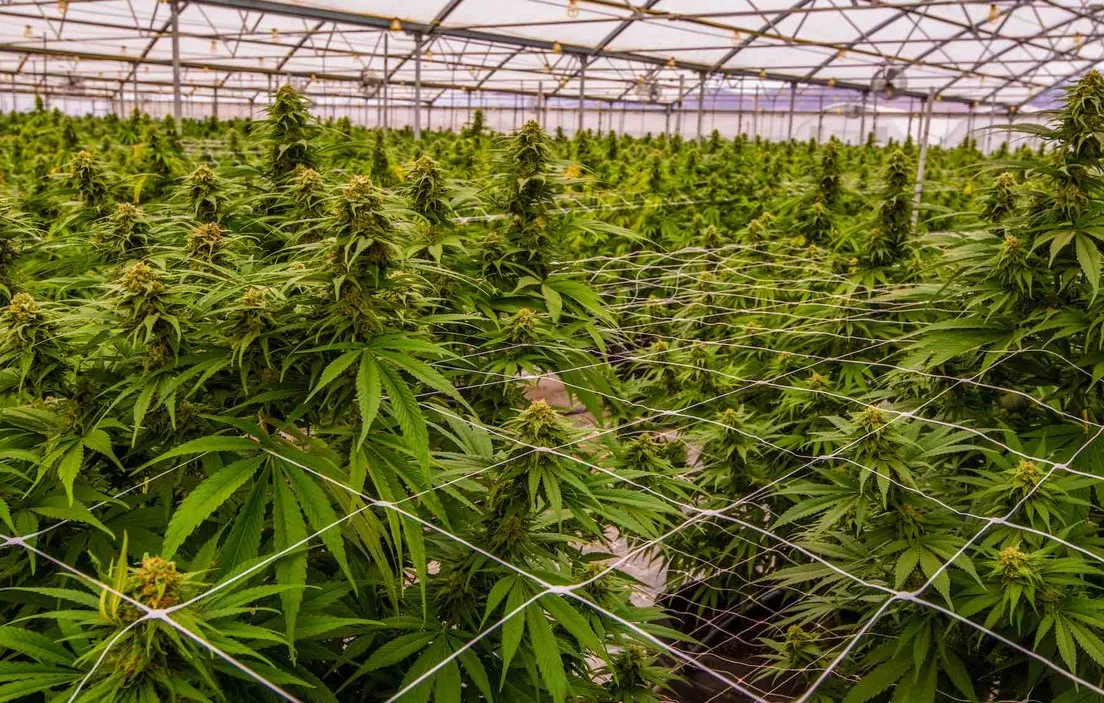There are lots of different reasons why people want to increase the level of THC in their buds. Some do it for medical reasons, while others do it for the high.
Here are a few of the main reasons for boosting a crop’s THC content:
- To achieve more significant mental and psychoactive effects.
- For extra relief from nausea, certain types of pain, spasticity, specific symptoms of multiple sclerosis, etc.
- To increase your overall cannabis yields.
The weed breeding landscape is very different to a decade or so ago. The increased legality of the herb ensures a higher level of freedom for breeders. The boost in the cultivation field’s talent pool means increased innovation. Not that long ago, a double-digit THC level was cause for celebration. Today, such weed isn’t even ‘mids’ because growers routinely hit 20%+, and occasionally, 30%!
Before we get started, it is essential to understand that you’ll find most of the THC and “potency” in the plant’s trichomes. These look like glistening crystals near harvest time. This guide offers five methods of increasing THC levels in your herb. As a bonus, many of the tricks also result in a yield boost.
Hack 1 – Strain & Individual Plant Genetics
A strain’s genetics is the single most important aspect of weed cultivation. No matter what, if a strain is incapable of offering 20%+ THC, no amount of work will help you achieve it. Moreover, if you don’t grow the plant correctly, you’ll end up with far less THC. Right off the bat then, you need to pick a high-potency herb such as Girl Scout Cookies (25-28%). Other examples include:
- Chem Berry D (25-32%)
- Hulk Berry (27%)
- Bruce Banner BX 2.0 (25-30%)
- Original Clue (24-30%)
- Green Gelato (25-27%)
Choose one of these strains, and you immediately give yourself a fighting chance.
Hack 2 – Harvesting
There is a maximum three-week window where you can harvest with confidence. Make a move too late, and some of the strain’s THC becomes the less desirable cannabinoid, CBN. Harvest too soon, and you come nowhere near the plant’s full potential. During the best period for harvesting, the trichomes become milky white, and the pistils change color from white to a reddish/brown. Here is what to look for:
- The ovaries begin to swell
- Flowers are sticky to the touch
- The flowers merge into large colas
- There is an intense smell from the herb, even though you have excellent airflow
- Several of the larger leaves are now yellow
- Up to 70% of the pistils are curled in
You can’t accurately analyze the trichomes without a magnifying glass, such as a jeweler’s loupe. There are typically three stages of trichome evolution:
- The trichomes have a flat head and do not yet possess the mushroom head. They are also clear. In this case, the plant is not ready for harvest.
- The color changes from clear to a milky white hue. This is the peak stage for harvesting if the goal is to benefit from high-THC weed.
- The trichomes’ color is now light brown. At this point, much of the THC is now CBN. It is arguably the peak level of CBD production. If you harvest weed at this stage, your high has a narcotic feel.
Hack 3 – Your Plants Health
To maximize the THC of your plant, you need to make sure that you are taking care of it. Avoid common mistakes like overwatering/underwatering, heat stress, root problems, irregular light cycles, and nutrient issues.
Take a close look at the leaves because they can tell a story of two. If you are an inexperienced cultivator, you may miss the signs:
- Yellow leaves could signal problems such as heat stress, nutrient deficiencies, or over-fertilization. One of the most common reasons for yellowing leaves is a significant fluctuation in the soil’s pH.
- If the leaves have a ‘burned’ appearance, it is possibly a sign of placing the plants too close to the light.
- Mottled brown spots are often a sign of manganese deficiency.
- Dark green leaves with the tips turned down potentially signal nitrogen toxicity.
- Spots or bites could indicate the existence of bugs and other pests.
Hack 4 – Lighting
Although you can grow marijuana without optimal access to light, the more it is exposed to, the better the yield and potency. This mantra is especially relevant during the vegetative stage. Ideally, you will give the plants at least 18 hours of light per day. When you switch to the flowering stage, your crop still requires 12 hours of lighting daily, to go with the 12 hours of constant darkness.
As for growing lights, you have several options:
- Fluorescent Grow Lights: This class of lighting includes CFLs and T5s. They are inexpensive, don’t use much electricity, and offer a decent light spectrum. However, they are not a good option if a high-THC strain is your goal.
- High-Intensity Discharge (HID) Lights: These are more powerful and efficient than fluorescents. The HID range includes Metal Halide (MH), High-Pressure Sodium (HPS), and Light Emitting Ceramic lights. In general, you get the best yield to watt ratio with HIDs. Downsides include a propensity for the bulbs to get very hot.
- LED Lights: LEDs have become a popular alternative to HPS lighting. You can potentially plug them into a wall, and hang them over the plants. Some breeders believe that LEDs provide more resinous plants. If you use this type of lighting, make sure you provide ample space between the lamp and your plants.
Hack 5 – The Curing Process
Depending on who you speak with, the curing process is either moderately important or a pivotal part of benefitting from high-THC weed. ‘Curing’ involves putting the herb into airtight jars once they have dried sufficiently. One theory suggests that the process causes chemical changes that boost the intensity of the herb’s cannabinoids, including THC.
The first step after harvest is to dry your buds thoroughly. The best drying environment is a room at a temperature of 70 degrees Fahrenheit (21 degrees Celsius) and 50% humidity. After you cut down the plant, trim any extra leaves, and hang the buds to dry. After 4-10 days, test the buds. If they feel dry and the stems are capable of snapping, it is time to cure your herb.
Next, place them in mason jars. Open the jar several times a day for the first few days. Once your buds feel a bit sticky, they are probably in the 60-65% humidity range, which is perfect for curing. After a week or so, when the buds no longer feel moist, it is only necessary to open the jars once every few days.
Experts suggest that your buds will improve in quality, and arguably potency, for up to six months while curing. At this point, further curing is unnecessary, and you should prepare your weed for long-term storage if you don’t intend to use it.
Final Thoughts on Increasing THC When Growing Cannabis Plants
There are quite a few ways to increase marijuana’s THC and potency, we have even heard of people using techniques such as adding supplements or allowing the plant to remain in the vegetative stage for 8+ weeks.



